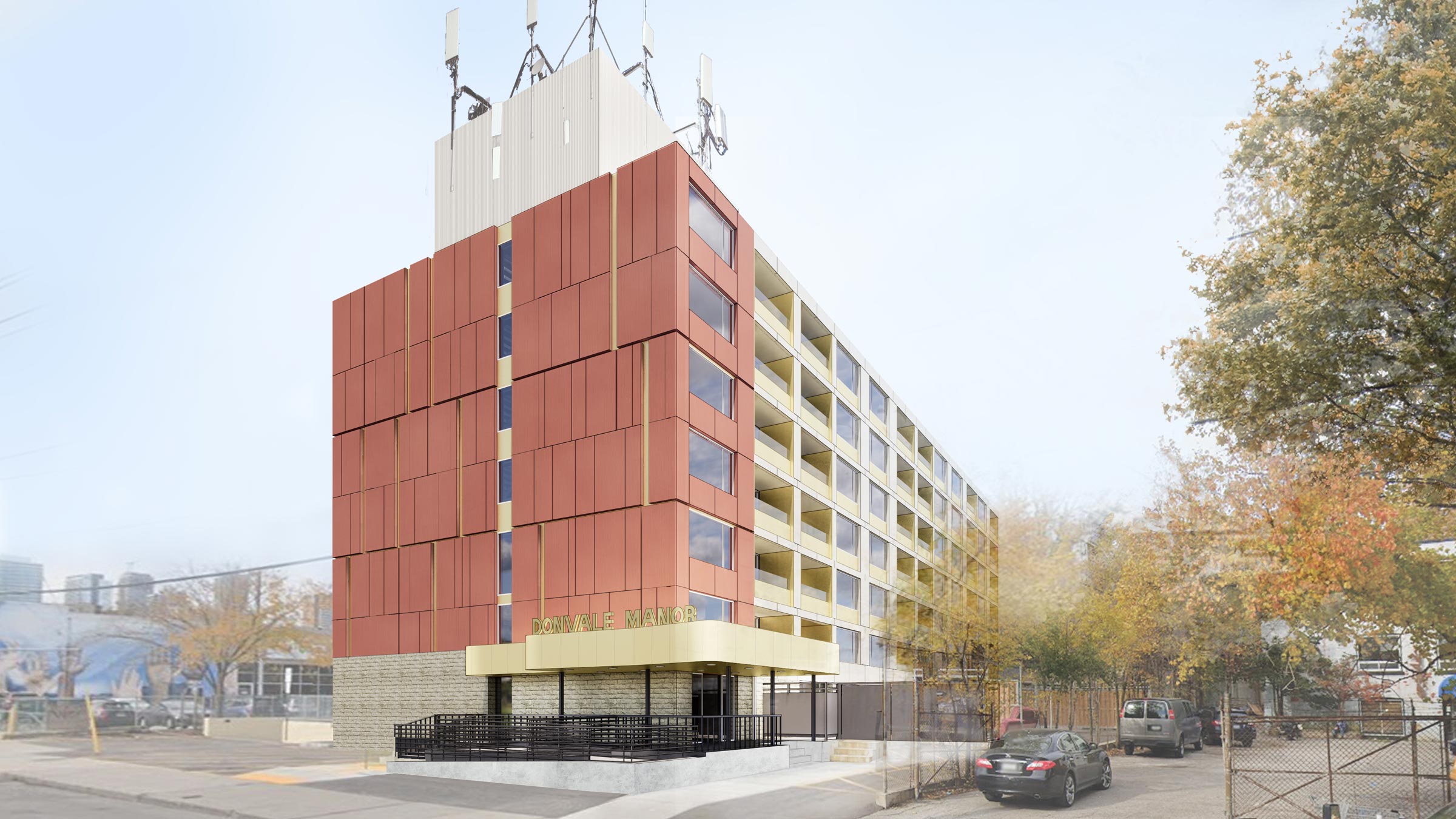Revitalizing an Aging Seniors’ Residence to Increase Energy Efficiency and Improve Comfort for Residents
Toronto Community Housing Corporation / Donvale Manor Seniors’ Apartment Retrofit

-
Sector
Housing
-
Location
Toronto, Ontario
-
Client
Toronto Community Housing Corporation
-
Size
53,440 sf / 4,965 sm
-
Completion
In Progress
In 2021, Architecture Counsel was engaged by the Toronto Community Housing Corporation to perform a ‘holistic’ retrofit of this seven-storey seniors’ apartment building at 330 Gerrard Street in downtown Toronto. Built in 1970, the aging building required significant renovations and upgrades to meet current accessibility standards, increase energy efficiency, reduce greenhouse gases, and improve resident comfort for tenants.
Typical of its era, Donvale Manor was constructed using traditional brick and concrete. Our team sought a design solution that would not only improve energy efficiency, safety, and accessibility but, more importantly, create new amenities and spaces to encourage social engagement and promote connectivity amongst its tenants.
The design is informed by passive house principles and will feature high-performance glazing, airtight construction, heat recovery ventilation, thermal-bridge-free detailing, and a highly insulated building envelope. The removal of the existing masonry façade will make way for an innovative over-cladding treatment consisting of glass fibre reinforced concrete (GFRC) panels with aluminum panels. The re-cladding will also give the aging building a new personality and presence, enlivening the previously bleak strip of Gerrard Street with a vitality that enlivens the pedestrian realm.
Inside, we are upgrading shared spaces such as building entrances, exits, lobbies, service offices, laundry facilities, parking, and community rooms to meet current Ontario Building Code and AODA standards and comply with the TCHC’s 2019 Accessibility Build Standards. We are addressing level floor surfaces and thresholds in rooms and common areas, width of door openings, opening door hardware, accessible signage, wayfinding (including tactile, audio, and braille information), tactile walking surface indicators, accessible millwork and furniture, appropriate materials and finishes, a barrier-free path of travel; and sufficient turning space to accommodate mobility devices.
A new community/social space for residents will provide tenants with a space to congregate and socialize with their neighbours.
